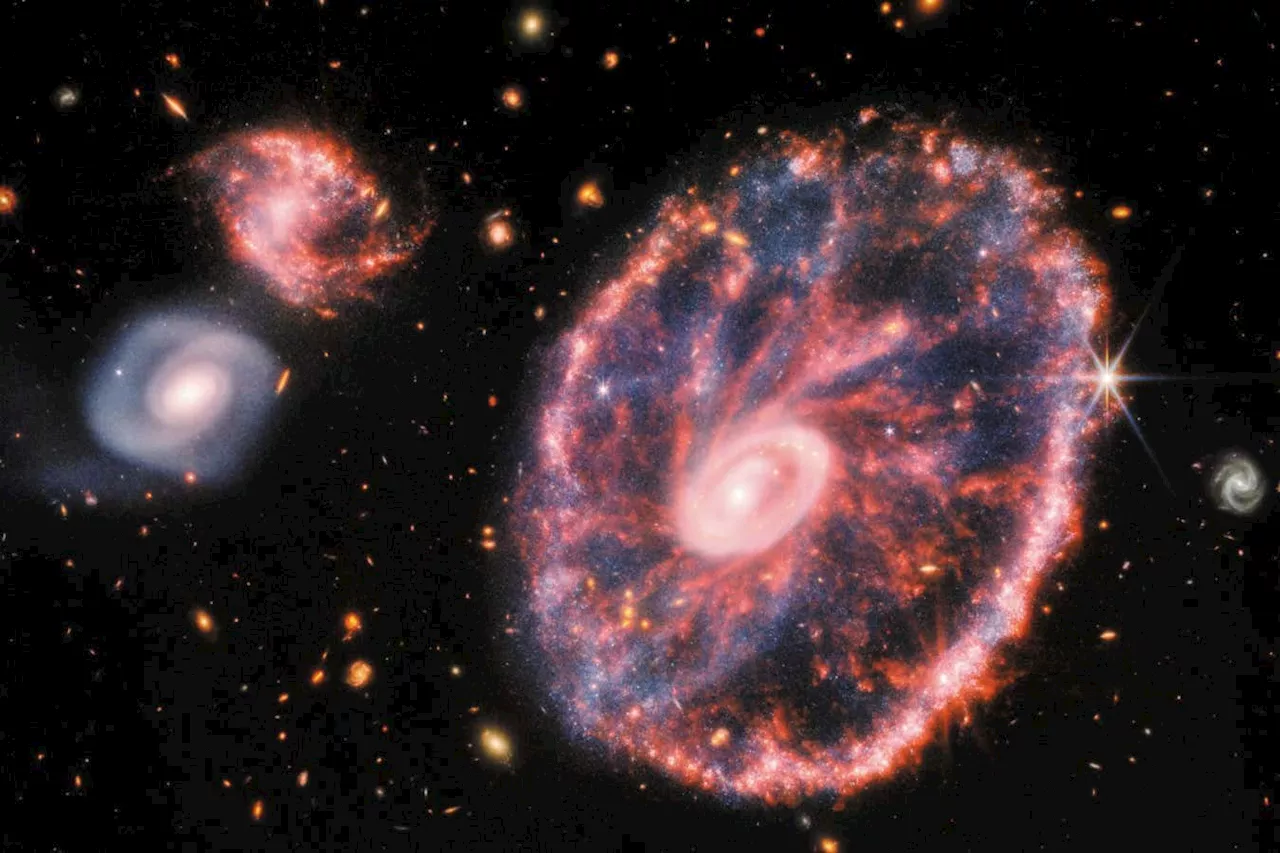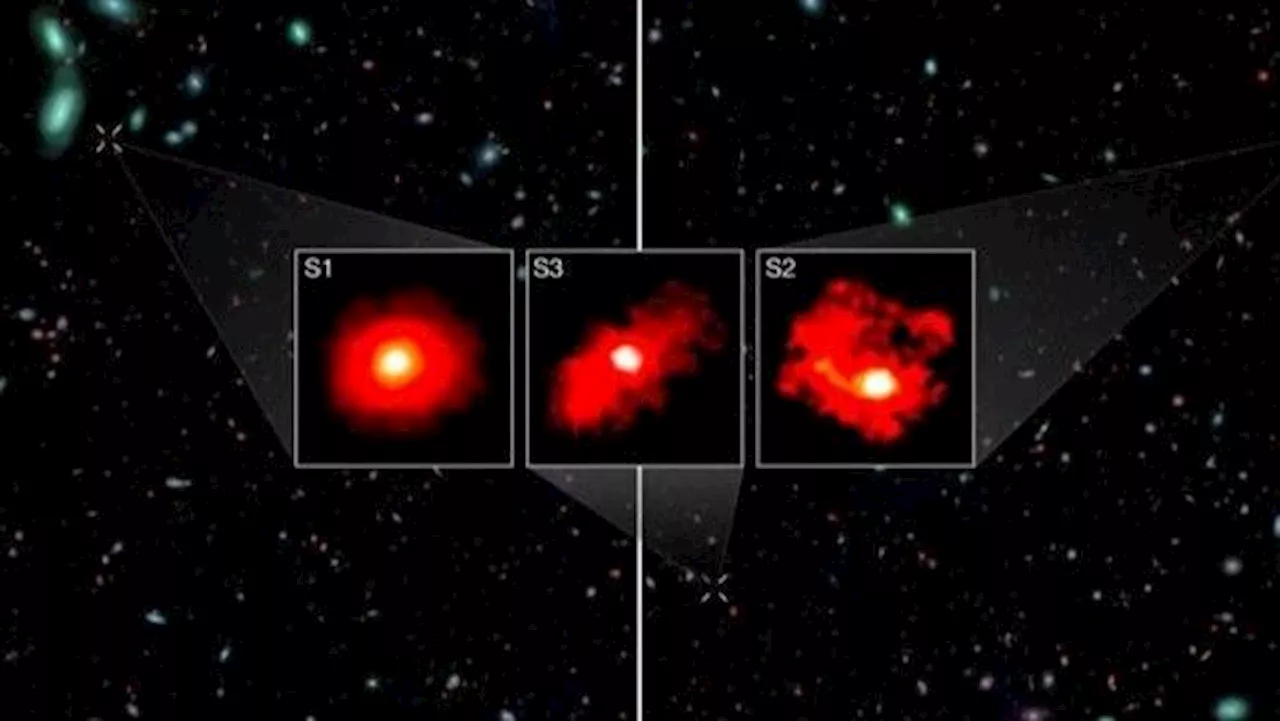Larissa G. Capella is a Brazilian science writer based in the U.S. with a broad passion for the sciences, including physics, astronomy, geoscience, neuroscience, and more. She earned both a B.S. in Physics and a B.A. in English from Western Washington University in 2024.
Jam packed issues filled with the latest cutting-edge research, technology and theories delivered in an entertaining and visually stunning way, aiming to educate and inspire readers of all ageshe three"Red Monsters," captured by the James Webb Space Telescope, are extremely massive, dusty galaxies formed in the first billion years after the Big Bang.
The study was led by an international team at the University of Geneva and utilized data from the FRESCO survey of the JWST. It focused on galaxies withvalues between z=5 and z=9, when the universe was only 1 billion to 1.5 billion years old. Redshift measures how much wavelengths of light coming from distant objects stretch on their way to our detectors due to the expanding universe, with higher values indicating greater distance and age.
The three Red Monsters appear red in the JWST's images due to their large dust content, which makes them absorb shorter wavelengths of light and scatter the remaining light into longer, reddish wavelengths. The JWST can observe them so clearly because it captures infrared light, enabling scientists to see past the dust, unlike the, which is limited to optical light. This ability to see through cosmic dust is one of the reasons JWST has revolutionized our view of the universe.
The stellar masses of these three galaxies are so large that they require a stellar-mass conversion efficiency of about 50%, higher than the typical efficiency observed in galaxies today. For example, most galaxies at later times convert only about 20% of their available gas into stars. These findings suggest that the early universe may have had a different set of conditions that allowed for much faster and more efficient galaxy growth.
United States Latest News, United States Headlines
Similar News:You can also read news stories similar to this one that we have collected from other news sources.
 10 stunning James Webb Space Telescope images show the beauty of spaceMaggie Aderin-Pocock, who has worked on the JWST, catalogues the science behind its most stunning images in her new book, Webb's Universe. Here's her pick of the telescope’s best shots
10 stunning James Webb Space Telescope images show the beauty of spaceMaggie Aderin-Pocock, who has worked on the JWST, catalogues the science behind its most stunning images in her new book, Webb's Universe. Here's her pick of the telescope’s best shots
Read more »
 James Webb Space Telescope sees lonely supermassive black hole-powered quasars in the early universeRobert Lea is a science journalist in the U.K. whose articles have been published in Physics World, New Scientist, Astronomy Magazine, All About Space, Newsweek and ZME Science. He also writes about science communication for Elsevier and the European Journal of Physics. Rob holds a bachelor of science degree in physics and astronomy from the U.K.
James Webb Space Telescope sees lonely supermassive black hole-powered quasars in the early universeRobert Lea is a science journalist in the U.K. whose articles have been published in Physics World, New Scientist, Astronomy Magazine, All About Space, Newsweek and ZME Science. He also writes about science communication for Elsevier and the European Journal of Physics. Rob holds a bachelor of science degree in physics and astronomy from the U.K.
Read more »
 James Webb Space Telescope discovers mysterious 'red monster' galaxies so large they shouldn't existBen Turner is a U.K. based staff writer at Live Science. He covers physics and astronomy, among other topics like tech and climate change. He graduated from University College London with a degree in particle physics before training as a journalist.
James Webb Space Telescope discovers mysterious 'red monster' galaxies so large they shouldn't existBen Turner is a U.K. based staff writer at Live Science. He covers physics and astronomy, among other topics like tech and climate change. He graduated from University College London with a degree in particle physics before training as a journalist.
Read more »
 Lava could light up the James Webb Space Telescope's search for watery exoplanetsKiona Smith is a science writer based in the Midwest, where they write about space and archaeology. They've written for Inverse, Ars Technica, Forbes and authored the book, Peeing and Pooping in Space: A 100% Factual Illustrated History. They attended Texas A&M University and have a degree in anthropology.
Lava could light up the James Webb Space Telescope's search for watery exoplanetsKiona Smith is a science writer based in the Midwest, where they write about space and archaeology. They've written for Inverse, Ars Technica, Forbes and authored the book, Peeing and Pooping in Space: A 100% Factual Illustrated History. They attended Texas A&M University and have a degree in anthropology.
Read more »
 James Webb Space Telescope finds galaxies pointing toward a dark matter alternativeSharmila Kuthunur is a Seattle-based science journalist covering astronomy, astrophysics and space exploration. Follow her on X skuthunur.
James Webb Space Telescope finds galaxies pointing toward a dark matter alternativeSharmila Kuthunur is a Seattle-based science journalist covering astronomy, astrophysics and space exploration. Follow her on X skuthunur.
Read more »
 James Webb Space Telescope finds 1st 'failed star' candidates beyond the Milky WayRobert Lea is a science journalist in the U.K. whose articles have been published in Physics World, New Scientist, Astronomy Magazine, All About Space, Newsweek and ZME Science. He also writes about science communication for Elsevier and the European Journal of Physics. Rob holds a bachelor of science degree in physics and astronomy from the U.K.
James Webb Space Telescope finds 1st 'failed star' candidates beyond the Milky WayRobert Lea is a science journalist in the U.K. whose articles have been published in Physics World, New Scientist, Astronomy Magazine, All About Space, Newsweek and ZME Science. He also writes about science communication for Elsevier and the European Journal of Physics. Rob holds a bachelor of science degree in physics and astronomy from the U.K.
Read more »
